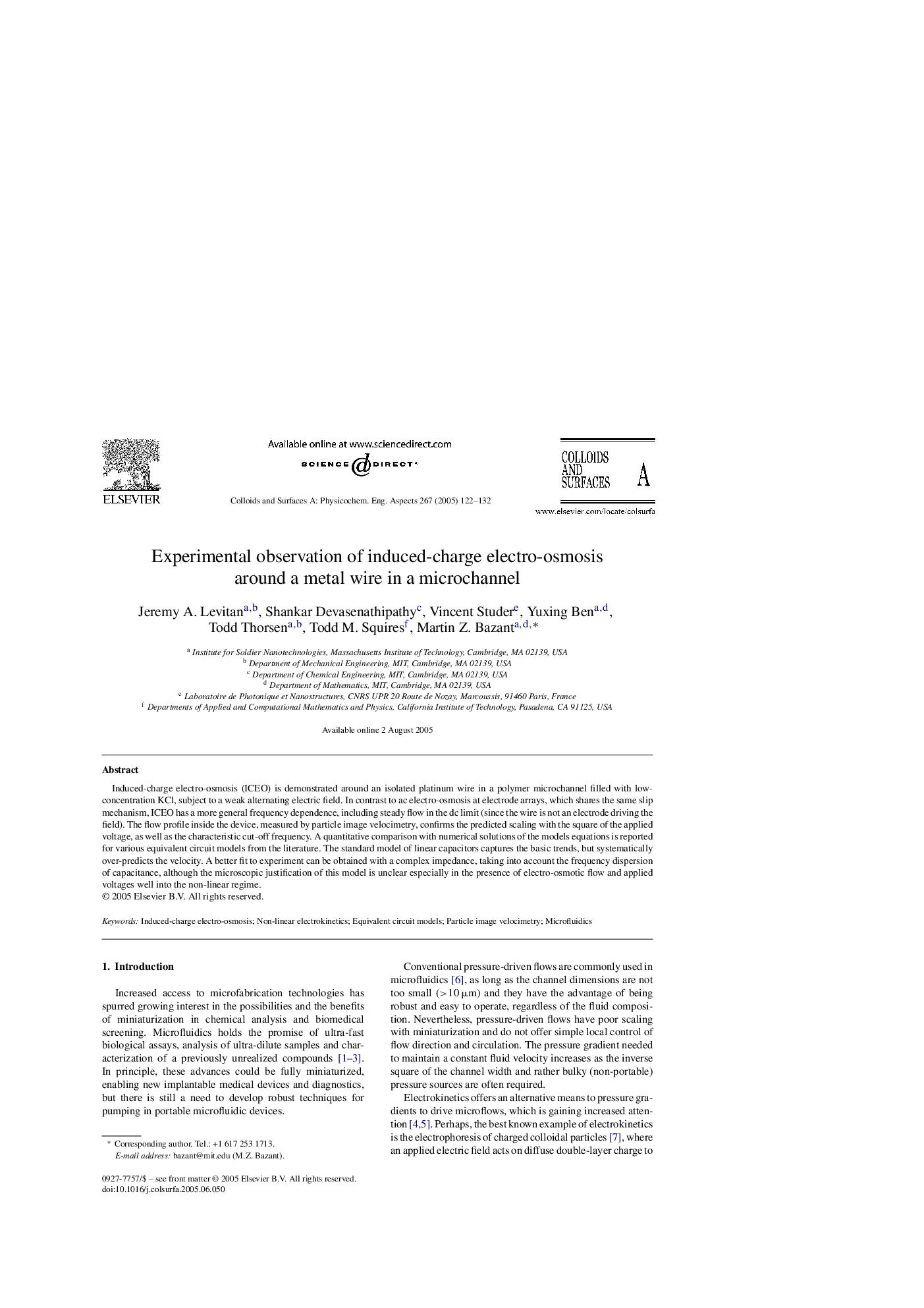| Article ID | Journal | Published Year | Pages | File Type |
|---|---|---|---|---|
| 9675638 | Colloids and Surfaces A: Physicochemical and Engineering Aspects | 2005 | 11 Pages |
Abstract
Induced-charge electro-osmosis (ICEO) is demonstrated around an isolated platinum wire in a polymer microchannel filled with low-concentration KCl, subject to a weak alternating electric field. In contrast to ac electro-osmosis at electrode arrays, which shares the same slip mechanism, ICEO has a more general frequency dependence, including steady flow in the dc limit (since the wire is not an electrode driving the field). The flow profile inside the device, measured by particle image velocimetry, confirms the predicted scaling with the square of the applied voltage, as well as the characteristic cut-off frequency. A quantitative comparison with numerical solutions of the models equations is reported for various equivalent circuit models from the literature. The standard model of linear capacitors captures the basic trends, but systematically over-predicts the velocity. A better fit to experiment can be obtained with a complex impedance, taking into account the frequency dispersion of capacitance, although the microscopic justification of this model is unclear especially in the presence of electro-osmotic flow and applied voltages well into the non-linear regime.
Keywords
Related Topics
Physical Sciences and Engineering
Chemical Engineering
Colloid and Surface Chemistry
Authors
Jeremy A. Levitan, Shankar Devasenathipathy, Vincent Studer, Yuxing Ben, Todd Thorsen, Todd M. Squires, Martin Z. Bazant,
